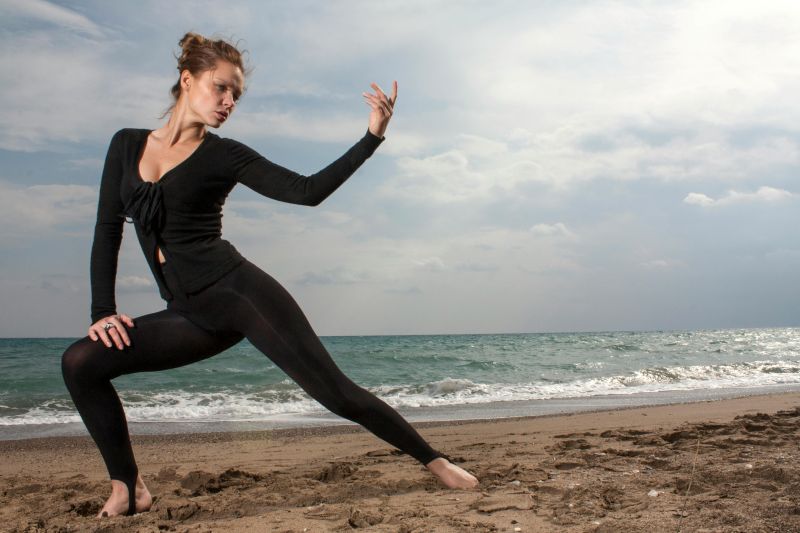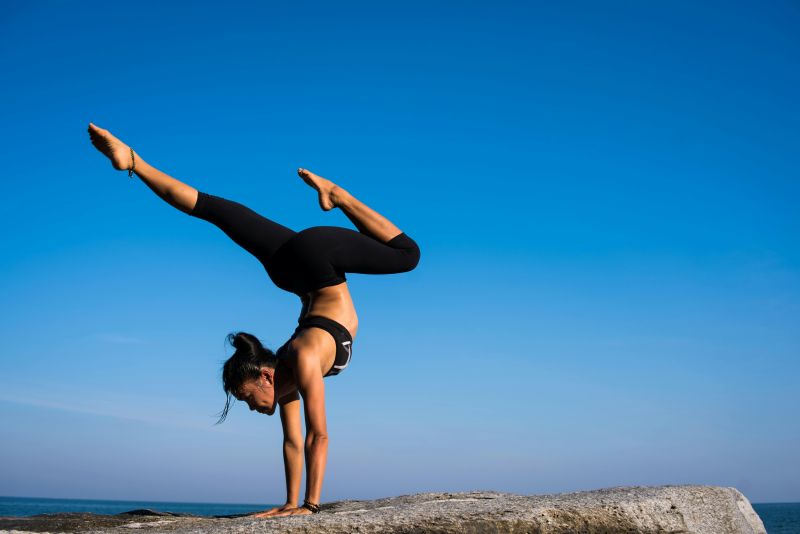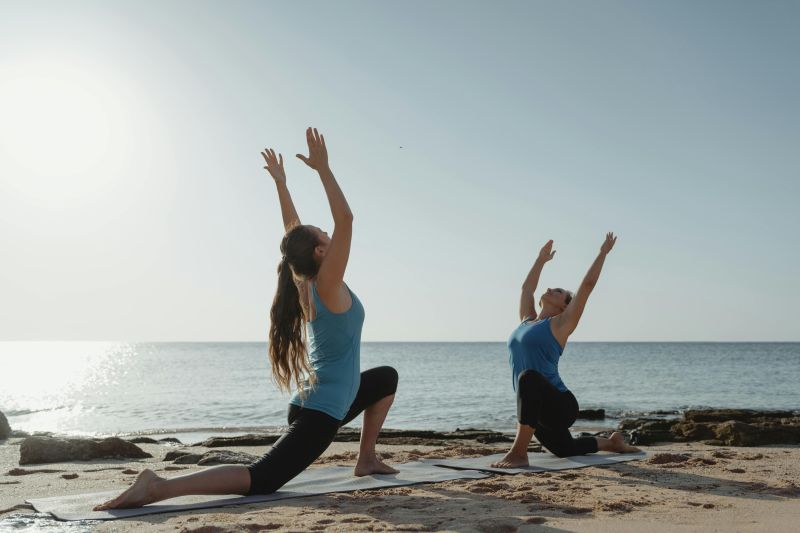There’s something special about working out with the ocean breeze in your hair and the sound of waves crashing in the background. For many people, beach workout exercises don’t just break the monotony of gym sessions—they bring a sense of freedom and joy to the fitness journey.
Whether you’re a casual beachgoer looking to stay active or an athlete training off-season, beach workout routines can be surprisingly effective. Sand adds resistance. The uneven ground challenges your stability. And the scenery? It makes every squat, sprint, and push-up feel like less of a chore.
Let’s take a closer look at how a beach workout plan can keep your body strong and your mind refreshed.

Why Choose Beach Workout Exercises Over the Gym?
Most people associate workouts with treadmills, dumbbells, or a packed fitness studio. But a beach workout gym—yes, the sandy, wide-open kind—offers some benefits that indoor workouts simply can’t match.
Unstable surface = extra challenge. Sand is unpredictable. When you perform lunges, planks, or burpees, your muscles must work harder to stay balanced. That means better joint stability, stronger core engagement, and quicker fatigue—which leads to faster gains.
Low impact, high return. Running on sand is gentler on your joints than running on pavement. Your feet sink slightly, absorbing shock naturally. And because sand absorbs some of your energy, your muscles have to work harder to maintain pace and form.
Built-in cardio. Even walking on sand gets your heart rate up. Add short sprints or jumping jacks and your cardio is covered.
Let’s not forget the emotional boost. Being by the water improves mood, reduces stress, and can help fight workout burnout. A simple beach fitness workout can feel like a mini-vacation—even if it’s just 30 minutes long.
Beach Workout Routine: Full-Body Exercises for Any Skill Level
A beach workout routine doesn’t need fancy equipment. Just your body, a towel or mat, and maybe a water bottle. Here’s a sample plan that works for beginners and seasoned athletes alike.
Warm-up (5 minutes)
- Jog in place on the sand
- Arm circles
- Leg swings
- Side lunges
Main Workout (20–30 minutes)
Repeat the circuit below 2–4 times, depending on your level.
- Sand Sprints – Run 20 meters and back. Repeat 3 times. Great for legs, cardio, and coordination.
- Push-Ups – 15 reps. Keep your core tight. The sand will wobble your hands and make this harder.
- Squat Jumps – 20 reps. Land soft. The sand protects your knees but don’t get sloppy with form.
- Plank to Shoulder Tap – 30 seconds. Keep hips still. Great for abs and shoulders.
- Walking Lunges – 20 total. Use a towel to mark distance if needed.
- Mountain Climbers – 45 seconds. Drive knees fast and stay light on toes.
Cool Down (5 minutes)
- Forward fold stretch
- Calf and hamstring stretches
- Shoulder rolls
- Deep breathing
This type of beach fitness exercise hits all major muscle groups and builds endurance fast. Plus, it can be adjusted for different goals—want to improve agility? Focus on sprints. Need more upper body strength? Add push-up variations.

Beach Training Exercises for Runners and Athletes
Runners and athletes often use beach training exercises during off-season conditioning—and for good reason. Sand makes basic moves much more challenging, helping build strength and stamina without the need for machines or weights.
Hill Sprints on Sand Dunes:
If you have access to dunes or inclines, try 30-second uphill sprints. Walk down slowly to recover. These fire up the glutes, hamstrings, and calves while skyrocketing heart rate.
Side Shuffles & Lateral Bounds:
These improve lateral movement—key for athletes in soccer, basketball, and tennis. The uneven sand forces your legs to react quickly, boosting stability and speed.
Bear Crawls:
Great for runners who want better shoulder endurance and hip mobility. Crawl forward and backward 20–30 feet in soft sand. Trust us, it’s harder than it sounds.
Single-Leg Balances:
Stand on one foot and hold for 30 seconds. Then switch. The shifting sand strengthens ankles and feet—important for injury prevention.
Many athletes include beach workout programs in their summer schedules to change things up and condition their bodies in ways that pavement can’t.
Beach Fitness Exercises That Don’t Feel Like Work
Sometimes, the best exercises are the ones that don’t feel like exercise. The beach makes that possible. Here are a few beach fitness workouts that mix play with purpose:
Paddleball or Frisbee:
You’ll be running, lunging, and stretching constantly—just without realizing it. Great way to get friends or family involved, too.
Sand Yoga or Stretch Flows:
Do a gentle yoga session near the shore. The sand helps protect knees and wrists, and the sound of waves makes relaxation easier.
Beach Volleyball:
This is a full-body workout wrapped up in fun. Jumping in sand activates your legs, arms, and core while giving you a serious cardio burn.
Bodyweight Circuits with a Twist:
Try doing jumping jacks in ankle-deep water. Or squats with arms stretched overhead while balancing on a soft towel. These little changes make simple moves harder—and more effective.
With the right beach workout plan, you won’t need a personal trainer or a gym membership. Just a patch of sand, the ocean, and a little motivation.
Creating a Beach Workout Plan That Sticks
Consistency is key—whether you’re training for a race or just staying active during vacation. A good beach workout program has structure but remains flexible enough for changing tides and weather.
Here’s a basic weekly plan:
Monday: Strength & Core
(Push-ups, planks, squats)
Tuesday: Cardio Intervals
(Sand sprints, mountain climbers)
Wednesday: Recovery Flow
(Yoga, walking, mobility work)
Thursday: Agility & Balance
(Lateral bounds, lunges, single-leg drills)
Friday: Full-Body Circuit
(Combine cardio, core, and strength)
Saturday: Play Day
(Volleyball, paddleball, games)
Sunday: Rest or Gentle Walk
Stick to this for 3–4 weeks, and you’ll start noticing stronger legs, better stamina, and a happier mood. It’s one of those routines you’ll look forward to—not dread.

FAQs
What are the best shoes for a beach workout?
Barefoot is often best on soft sand to strengthen your feet and ankles. However, for rocky or shell-covered beaches, wear lightweight water shoes with grip.
Can I do a beach workout if I’m a beginner?
Yes, start with low-impact movements like walking lunges or gentle yoga. The sand makes everything slightly harder, so start slow and build up.
Are beach workout exercises safe for older adults?
They can be—just avoid high-impact moves like jumping on dry sand. Stick to balance drills, gentle stretches, and walking.
How often should I do beach fitness workouts?
2–3 times a week is perfect for general fitness. Add a fourth day if you’re targeting endurance or weight loss.
What if the sand is too hot or too soft?
Try early morning sessions or bring a yoga mat. Wet sand near the water is firmer and cooler—perfect for barefoot training.
Conclusion:
Beach workout exercises offer a fun, effective way to stay fit while enjoying nature. From structured circuits to games and stretches, the beach can be your gym, your track, and your studio—all in one. Whether you’re a runner, an athlete, or just someone who wants to move more in the fresh air, this beach workout routine will keep your body engaged and your mind relaxed.
Ready to trade the treadmill for the tide? You don’t need a fancy program—just show up, kick off your shoes, and move with the rhythm of the waves.

